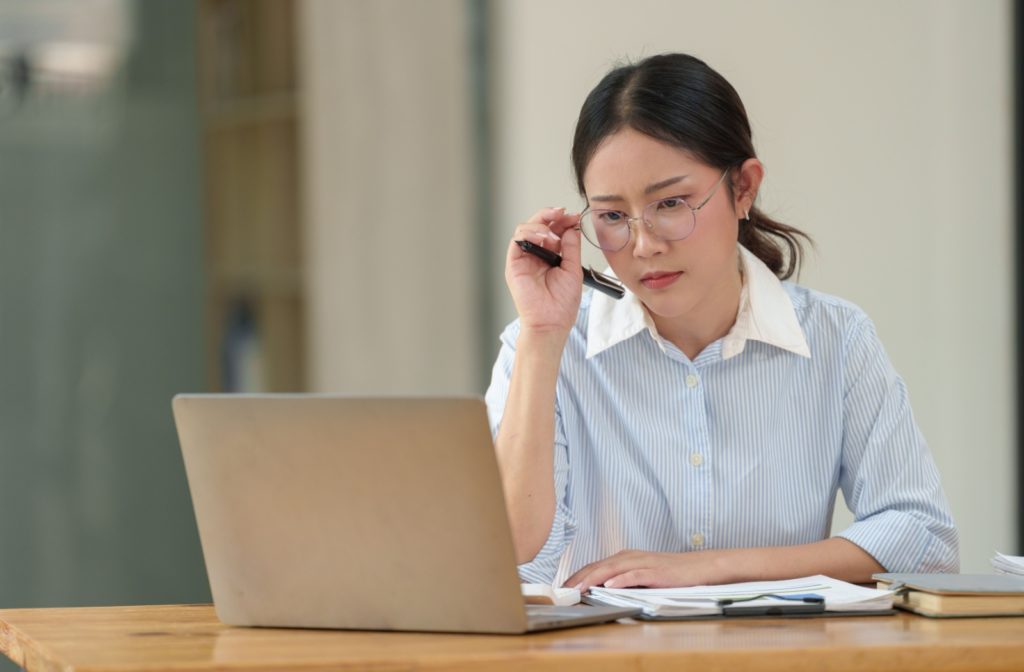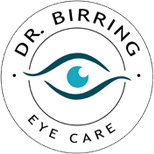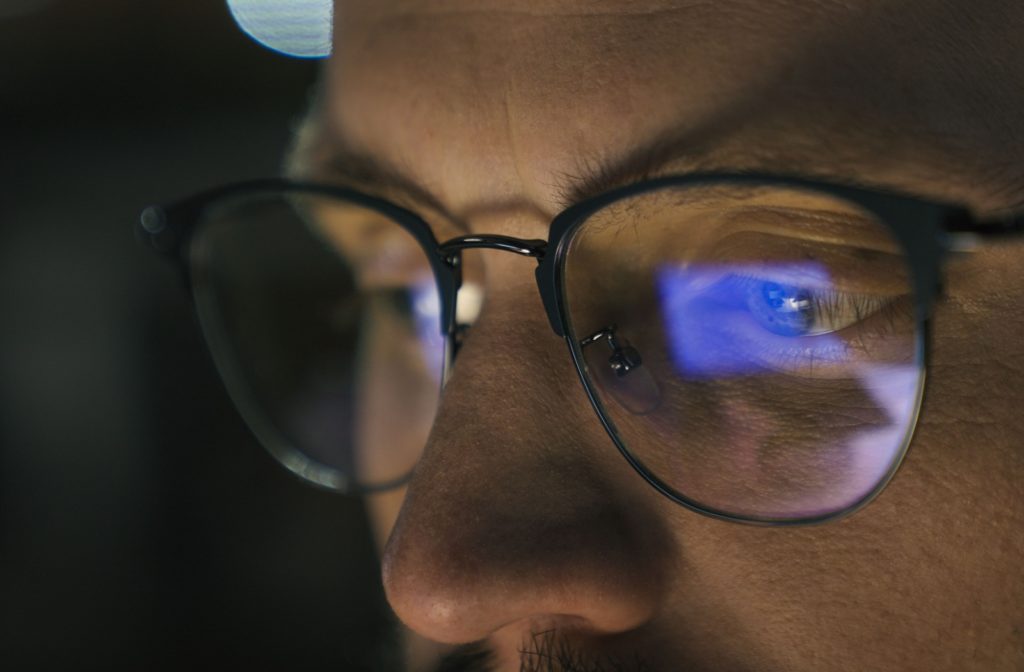Eye strain is nothing new, but the explosion of digital devices over the last few decades has made digital eye strain more of a concern than ever before. At best, eye strain might leave you with dry, gritty eyes and a feeling of tiredness. At worst, it can cause headaches and vision problems.
Spending less time in front of a screen would seem to be the obvious answer, but for many of us, that isn’t a feasible option. Luckily, there are ways you can manage your screen time to help prevent or minimise the effects of eye strain:
- Following the 20-20-20 rule
- Adjusting your screen settings
- Maintaining proper distance from the screen
- Using blue light filters
- Using night mode at night
What is Eye Strain?
Eyestrain, also known as digital eye strain or computer vision syndrome, refers to the discomfort experienced after visually strenuous tasks like prolonged use of digital devices. Eye strain manifests in symptoms such as dry eyes, blurred vision, headaches, and neck or shoulder pain. While not usually serious, eye strain can be uncomfortable and can affect both productivity and focus.
What Causes Eye Strain?
Several factors contribute to eyestrain, including:
- Extended Screen Use: Staring at screens for long periods, whether for work, study, or gaming, can overwork your eye muscles.
- Improper Lighting: Poor lighting or glare on your screen can make your eyes work harder.
- Incorrect Viewing Distance: Sitting too close or too far from your screen can strain your eyes.
- Uncorrected Vision Problems: Not using the correct prescription glasses or contacts can exacerbate eyestrain.
How Long Does Eye Strain Last?
The duration of eye strain varies depending on both its severity and its underlying causes. There isn’t a lot of research on this topic, however, the symptoms of eye strain may start to subside in as little as an hour.
Generally, the longer you’ve been looking at a screen, the longer it’ll take for your eyes to recover. It may take a few hours for the symptoms to fully dissipate, especially if you’ve been looking at a computer or smartphone screen all day.
Taking steps to prevent eye strain in the first place can also accelerate recovery from eye strain. However, if symptoms persist for several days, eye strain might not be the problem, and you should contact your optometrist to rule out more serious vision health issues.
Links Between Eye Strain and Screen Use
There are both direct and indirect links between eye strain and screen time. Digital screens are often brightly lit, which puts stress on your eyes, especially in an otherwise dark environment (like scrolling on your smartphone in bed). The potential effects of blue light on our vision have given optometrists cause for concern, too.
Meanwhile, focusing on screens for long periods of time makes us blink less frequently. Blinking less frequently leads to a higher chance that our eyes will become dehydrated (and more vulnerable to eye strain) and results in overall more uncomfortable symptoms.

5 Tips to Manage Screen Time
We might not be able or willing to pull ourselves away from our screens entirely, but managing your screen time effectively can help you prevent and alleviate eye strain. Here are some practical tips:
- Follow the 20-20-20 Rule: Every 20 minutes, look away from your screen for 20 seconds at something 20 feet away to give your eyes a break.
- Adjust Your Screen Settings: Reduce glare by adjusting your screen brightness and contrast and ensuring that your workspace is well-lit. The goal here is to make sure that your screen and the surrounding environment are the same level of brightness. Screens that are too dark can affect your vision as much as screens that are too bright.
- Maintain a Proper Distance: Ideally, you should be sitting around 25 inches/60cm (about an adult’s arm’s length) away from your computer screen, with the screen angled slightly down. Sitting too close to the screen makes your eyes work harder to focus on it, and causes eye strain to occur faster.
- Use Blue Light Filters: Consider using blue light-filtering glasses or screen protectors to minimize exposure. Although blue light isn’t proven to directly damage your eyes, it does disrupt your sleep cycle, which can lead to spending more time on your devices.
- Use Night Mode At Night: Many devices have a “night mode” that automatically dims your screen brightness depending on the time of day. This can save you from having to adjust your screen manually, so you don’t risk looking at a too-bright screen at night.
We’re Here to Help
Eye strain doesn’t have to be an inconvenience. If the tips in this blog post don’t help you get rid of eye strain, Birring Eyecare can work with you to find a solution that’ll help keep your eyes fresh. For more information, book an appointment with us today!



